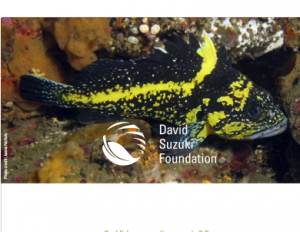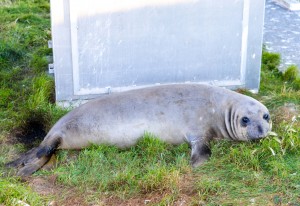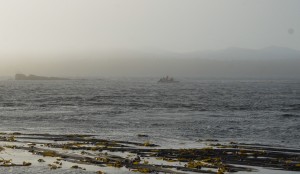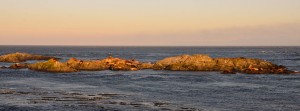 Rockfish conservation areas in B.C.: Our current state of knowledge
Rockfish conservation areas in B.C.: Our current state of knowledge
Dana Haggarty, M.Sc., PhD candidate Consultant for the David Suzuki Foundation
August 12, 2013
This 84 page report is a thorough research on the extent, purpose and effects of RCA in BC. It has very good maps of the areas involved.
See the full PDF:RockfishConservationAreas-OurCurrentStateofKnowledge-Mar2014
EXERPT: Lessons learned from RCAs
British Columbia now has almost a decade of experience with spatial protection in the network of RCAs. Several lessons from this experience should be applied to the developing MPA network:
- All empirical studies of RCAs reviewed in this report are limited by their lack of data from before the reserves were established. If proper foresight and resources are applied, this problem can be avoided and data can be collected prior to MPA establishment. For example, the system of marine reserves in Oregon is being phased in to allow for data to be collected prior to establishment (personal communication, D. Fox, Oregon Department of Fish and Wildlife). This greatly improves ability to assess performance of reserves and apply adaptive management.
- Long-term monitoring of reserves is necessary to determine their effectiveness. Assessments of which reserves are performing well and which reserves are underperforming are necessary ingredients for adaptive management (Hamilton, Caselle et al. 2010, White, Botsford et al. 2011). Monitoring data and reserve assessments are also necessary to gain and retain buy in from fishing communities. All fishing sectors interviewed for this report felt strongly that they wanted to see long-term monitoring put into place in RCAs and were anxious to know how RCAs were performing. However, it is difficult to get support for long-term monitoring. The need for monitoring should, therefore, be specified and planned for in the establishment of MPAs.
- Outreach, education and enforcement plans must also be developed and maintained for networks of MPAs. Commercial compliance with RCAs is very high since electronic fishery monitoring was put in place shortly after they were established. Recreational compliance, on the other hand, was found to be quite low. Recreational effort in 44 of 77 RCAs in the Strait of Georgia has not significantly dropped as a result of RCA establishment and compliance in many other RCAs around Vancouver Island in 2011 was also quite low. Greater education and outreach regarding RCA boundaries and regulations as well as why they are important is desperately needed. NGOs that have the ability to reach a broad spectrum of society such as the David Suzuki Foundation and the Vancouver Aquarium could play important roles in this regard. Modern tools such as smart-phone applications that employ GPS technology should be explored. These tools could both educate people about conservation initiatives as well as help people navigate in our increasingly complex world of spatially explicit management regulations. Compliance monitoring should also be built into monitoring plans to assess if regulations are having their desired effects. Enforcement must also be made a priority and supported with funding.
- Although many RCAs protect good rockfish habitat and contain good rockfish populations, not all RCAs are likely to be effective. Some RCAs were simply not well-located. A review of RCAs needs to be undertaken to identify which are likely to be successful and which are sub-optimal. White, Botsford et al. (2011) very elegantly put it: “Now that networks of reserves have been implemented worldwide, the time is ripe for the implementation of adaptive management. … Questions need to evolve from “Do reserves work?” to “When and why do marine reserves work, how long does it take, and what should we be measuring?”


